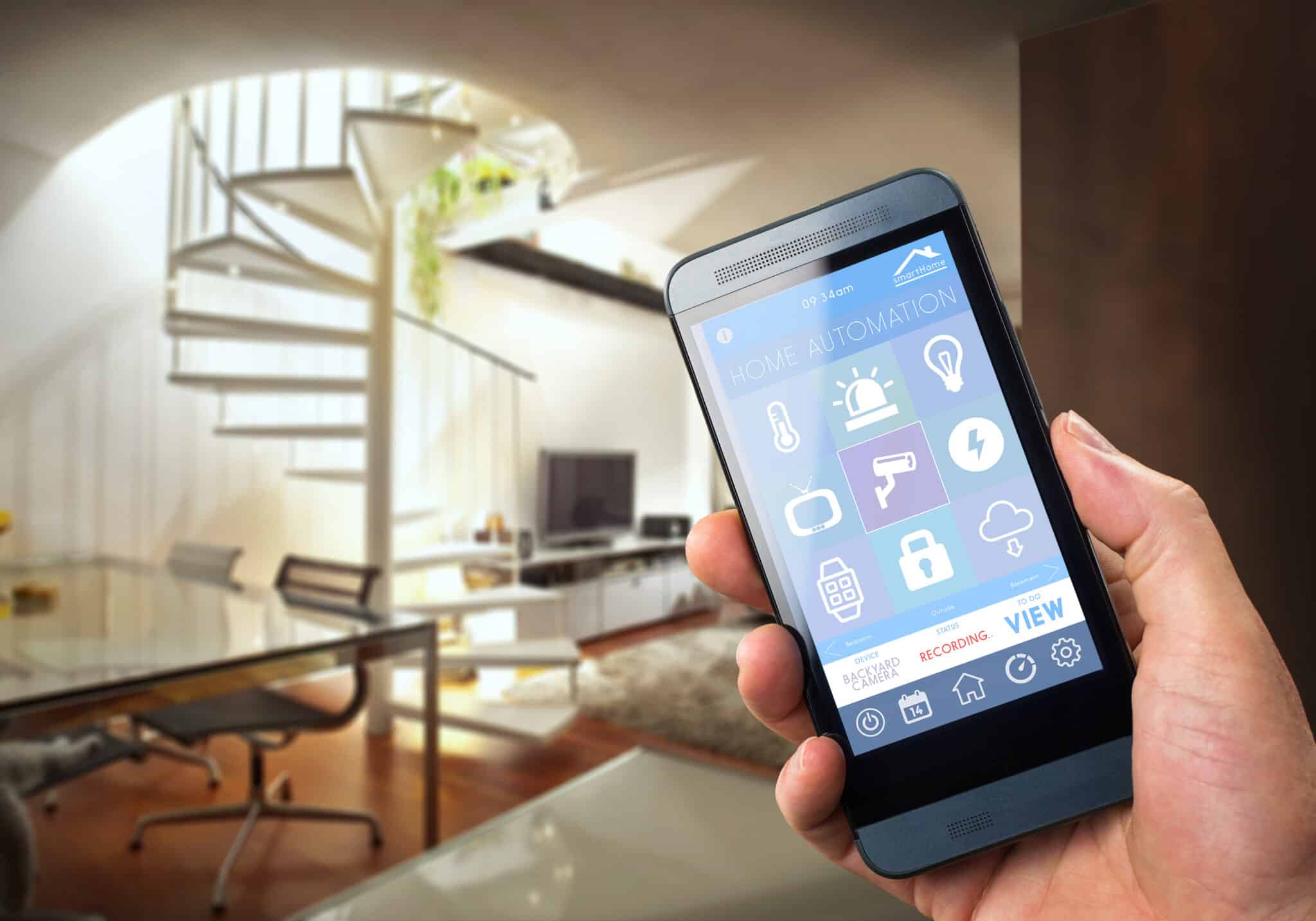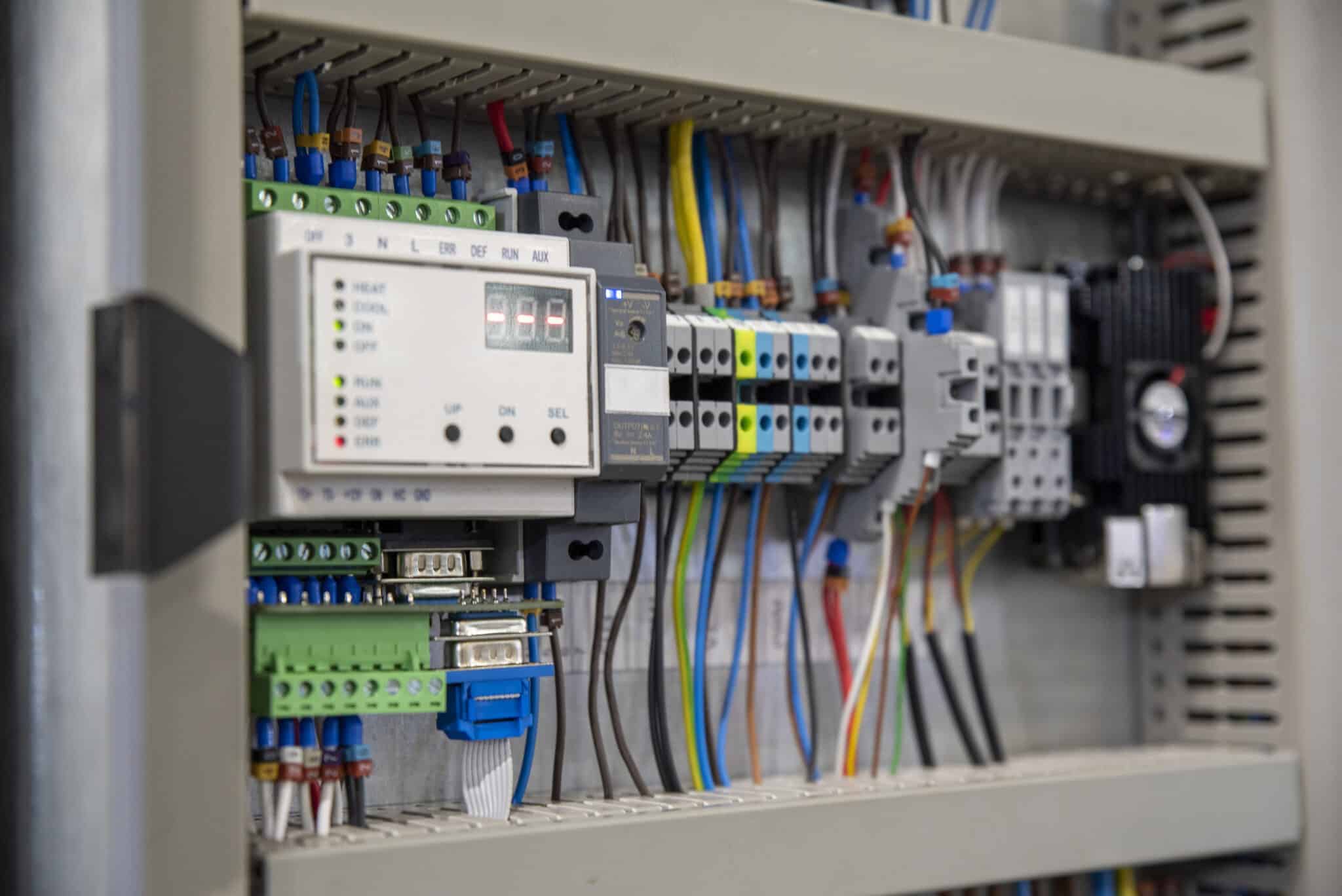
How to Prevent Electrical Surges During Winter Storms
Electrical surges are a major concern during winter storms, often causing damage to home appliances and electrical systems. These sudden spikes in voltage can result from lightning strikes, downed power lines, or fluctuations in the power grid. Without proper protection, homeowners may face costly repairs or even fire hazards.
During winter, the risk of sudden power fluctuations increases due to extreme weather conditions. Ice accumulation on power lines, strong winds, and increased electricity usage from heating systems put extra strain on the grid. This makes it essential to take proactive measures to safeguard your home.
Buffalo Electric provides expert electrical services in Grapevine, TX, helping homeowners prevent power-related issues before they occur. By understanding what causes voltage spikes and implementing the right protective measures, you can minimize the risks associated with winter storms. In this guide, we’ll explore the dangers of power surges, the best ways to protect your home, and why professional inspections are key to long-term safety.
What Causes Electrical Surges in Winter Storms?
Winter storms create the perfect conditions for electrical surges, putting homes at risk for power fluctuations and equipment damage. Ice accumulation, freezing temperatures, and strong winds can all contribute to sudden power disruptions. Understanding the causes of electrical surges can help homeowners take proactive steps to safeguard their homes and appliances before a storm hits.
Lightning Strikes and Voltage Spikes
One of the most well-known causes of electrical surges is lightning strikes. While winter lightning is less common than summer storms, it can still occur, especially during powerful blizzards or ice storms. When lightning strikes near power lines, it sends a sudden spike in voltage through the electrical grid. This surge can travel into homes, damaging appliances, frying circuit boards, and even causing electrical fires.
Even if lightning doesn’t directly strike a home, its impact on nearby power infrastructure can still create dangerous power surges. That’s why surge protection is essential, particularly in areas prone to severe weather.
Fallen Power Lines and Unstable Voltage
Fallen power lines are another major contributor to electrical surges. Winter storms often bring strong winds and heavy ice accumulation, which can weigh down or break power lines. When a power line snaps, it can cause a sudden disruption in electricity flow. When power is restored, the rapid return of voltage can create an electrical surge that may damage sensitive home electronics and appliances.
Additionally, when power lines sag or come into contact with trees, they can cause intermittent voltage fluctuations. These minor surges may not be noticeable at first but can gradually wear down appliances and shorten their lifespan.
Increased Demand on the Electrical Grid
Cold weather increases demand on the electrical grid as more homeowners rely on heating systems, space heaters, electric blankets, and other power-intensive appliances. This spike in electricity usage can overwhelm the grid, leading to power fluctuations and electrical surges.
During extreme cold, power companies may struggle to meet demand, sometimes resulting in rolling blackouts. When the power is suddenly switched back on after an outage, an electrical surge can occur, especially if many devices are still plugged in and drawing power simultaneously.
Power Outages and Sudden Restorations
Power outages followed by sudden restoration are another leading cause of electrical surges. When power is cut off due to a winter storm—whether from fallen trees, ice buildup, or equipment failure—the moment it comes back online can be risky.
A sudden rush of electricity surges through the system as the grid attempts to restore power to homes. If appliances and electronics are still plugged in, they may experience a voltage spike beyond what they can handle, leading to damage or even permanent failure. That’s why it’s recommended to unplug sensitive devices during storms or use surge protectors to absorb excess voltage.

The Dangers of Electrical Surges
Electrical surges can cause significant damage to homes and appliances, often without homeowners realizing it until it’s too late. Even small, repeated surges can shorten the lifespan of electronic devices, leading to costly replacements and repairs.
One of the biggest risks of electrical surges is damage to home appliances and electronics. Modern devices like televisions, computers, and smart home systems are highly sensitive to voltage fluctuations. A single surge can fry circuit boards, rendering these devices useless. Even minor power spikes can gradually degrade internal components, causing unexpected malfunctions over time.
Another serious concern is the increased risk of electrical fires. If a surge overloads a home’s wiring, it can cause overheating, which may lead to sparks or fire hazards. Outdated or faulty electrical systems are especially vulnerable, making it crucial to have an electrician inspect wiring for potential risks.
Beyond appliance damage and fire hazards, power surges can disrupt daily life. Losing essential devices like refrigerators, heaters, or internet routers during a winter storm can create major inconveniences. In extreme cases, medical equipment reliant on a stable power supply may stop functioning, posing health risks.
To avoid these dangers, homeowners should take proactive steps to protect their electrical systems. Installing surge protectors, unplugging devices during storms, and scheduling regular electrical inspections can help prevent unexpected losses and ensure a safer home environment.
How Surge Protectors Help Safeguard Your Home
One of the most effective ways to protect your home from electrical surges is by using surge protectors. These devices act as barriers, blocking excess voltage before it reaches your appliances and electronics. Without proper protection, even a small surge can cause long-term damage to sensitive equipment.
There are two main types of surge protectors: power strip surge protectors and whole-home surge protection systems. Power strip surge protectors are commonly used for individual devices like computers, TVs, and gaming consoles. They provide basic protection by diverting excess electricity away from plugged-in devices. However, these strips have limited capacity and may not be enough to handle large surges caused by lightning or power grid failures.
For better protection, homeowners should consider whole-home surge protectors. These systems are installed directly into the main electrical panel, offering a higher level of defense against large surges. Whole-home surge protectors safeguard every outlet and connected device, reducing the risk of widespread damage.
It’s important to note that not all surge protectors are created equal. Homeowners should choose surge protectors with a high joule rating for better durability and performance. Additionally, having an electrician inspect and install the right protection system ensures maximum effectiveness. Investing in surge protection now can save thousands of dollars in appliance repairs and provide peace of mind during winter storms.
Unplugging Devices as a Precautionary Measure
One of the simplest ways to protect your home from electrical surges during winter storms is to unplug devices when they are not in use. While surge protectors provide a level of defense, physically disconnecting electronics from power sources eliminates the risk of voltage spikes damaging sensitive equipment.
Unplugging is especially important for high-value or essential electronics, such as televisions, computers, gaming consoles, and kitchen appliances. These devices contain delicate circuit boards that can be easily damaged by sudden power fluctuations. Additionally, smart home systems and internet routers should be unplugged to prevent data loss or hardware failure.
A common mistake homeowners make is assuming that turning off a device is enough. However, if a device is still plugged into the outlet, it remains vulnerable to surges. The safest approach is to completely remove the power cord from the socket, particularly during severe weather events when power outages are likely.
For convenience, homeowners can use smart power strips that allow multiple devices to be turned off at once. These strips can be a great alternative for situations where unplugging every device manually is impractical. However, for maximum protection, unplugging remains the best option.
By making this a habit before a winter storm hits, homeowners can reduce the risk of unexpected damage and costly repairs. Taking this simple step can provide added peace of mind and ensure that electronics remain safe from unexpected power surges.
Investing in a Whole-Home Surge Protection System
For homeowners looking for comprehensive protection against electrical surges, a whole-home surge protection system is a smart investment. Unlike standard power strips, which only shield individual devices, whole-home systems safeguard the entire electrical network from dangerous voltage spikes.
These surge protectors are installed directly into the main electrical panel, intercepting excess electricity before it reaches household outlets. This provides a higher level of security, especially against large-scale surges caused by lightning strikes, power grid fluctuations, or downed lines during winter storms. With whole-home protection, every connected device—from kitchen appliances to HVAC systems—is shielded from potential damage.
One of the key benefits of a whole-home surge protection system is its ability to handle multiple surges over time. Unlike smaller surge protectors that may wear out after a single large event, these systems are built to withstand repeated voltage spikes, extending the life of your electronics and appliances.
For optimal protection, it’s important to have a electrician install the system. Professional installation ensures that the surge protector is properly grounded and integrated into the home’s electrical setup. Additionally, pairing a whole-home surge protector with point-of-use surge protectors (such as power strip models) provides an extra layer of defense for sensitive electronics.
Proper Grounding and Electrical System Maintenance
Ensuring that your home has a properly grounded electrical system is one of the best ways to prevent damage from electrical surges. Grounding directs excess electricity safely into the earth, reducing the risk of power spikes damaging your appliances and wiring. Without proper grounding, your home’s electrical system is more vulnerable to fluctuations caused by storms, downed power lines, or grid instability.
One of the first steps homeowners should take is to have their electrical grounding inspected by a professional electrician. Over time, grounding systems can degrade, especially in older homes. Loose or corroded ground wires can compromise the system’s ability to divert excess electricity, increasing the risk of damage during a surge. Regular inspections ensure that grounding remains effective and up to code.
Routine electrical maintenance is also essential for surge prevention. Old or faulty wiring can increase the chances of power fluctuations, leading to overheating or electrical fires. Having an electrician check for worn-out wires, outdated outlets, and overloaded circuits can help prevent potential hazards.
Additionally, upgrading to surge-resistant outlets and circuit breakers can enhance home protection. Modern circuit breakers with built-in surge suppression offer an extra layer of defense against unexpected voltage spikes. These devices can detect irregular power levels and cut off electricity before damage occurs.
By combining proper grounding, regular electrical inspections, and system upgrades, homeowners can create a more resilient electrical setup. Buffalo Electric provides expert electrical maintenance services in Grapevine, TX, ensuring homes stay protected from winter storm-related power surges.
The Role of Backup Generators in Surge Prevention
Backup generators provide a reliable power source during outages, but they must be installed and used correctly to prevent electrical surges. When a generator starts supplying power, sudden voltage fluctuations can occur, potentially damaging appliances and home wiring. Understanding how to integrate a generator safely is key to preventing these issues.
One of the most important components of a safe generator setup is a transfer switch. A transfer switch ensures that power flows smoothly between the generator and the home’s electrical system. Without one, electricity from the generator could backfeed into the grid, creating hazardous conditions for utility workers and causing dangerous voltage spikes inside the home.
Additionally, choosing a generator with automatic voltage regulation (AVR) can help maintain a steady power supply. AVR technology prevents sudden surges or drops in voltage, protecting sensitive electronics like computers, refrigerators, and heating systems from damage.
Homeowners should also consider whole-home surge protectors in conjunction with generators. Even with a transfer switch, power fluctuations can still occur when switching between the grid and the generator. A whole-home surge protector adds an extra layer of defense, ensuring that all connected devices remain safe from unexpected voltage spikes.
Professional installation is highly recommended to ensure that generators are properly wired into the home’s electrical system. Buffalo Electric provides expert generator installation and surge protection solutions in Grapevine, TX, helping homeowners stay powered and protected during winter storms.
Why Professional Electrical Inspections Are Essential
Regular electrical inspections are one of the best ways to prevent electrical surges and protect your home from winter storm damage. Many electrical surges occur due to outdated wiring, faulty grounding, or overloaded circuits—problems that can go unnoticed without a professional evaluation.
A licensed electrician can identify potential causes of electrical surges before they become serious. For example, loose connections, frayed wires, or aging electrical panels can increase the risk of electrical surges. By addressing these issues early, homeowners can avoid unexpected power disruptions and costly appliance damage caused by electrical surges.
Another key benefit of professional inspections is ensuring proper grounding. An electrician will check that your home’s electrical system is correctly grounded, which is essential for safely redirecting excess voltage during a surge. Poor grounding can make a home more vulnerable to electrical spikes, especially during winter storms when the power grid is under heavy demand.
During an inspection, electricians also assess the need for surge protection upgrades. They may recommend installing a whole-home surge protector or upgrading outdated circuit breakers to models with built-in surge suppression. These improvements add an extra layer of security against sudden voltage fluctuations.
For homeowners in Grapevine, TX, Buffalo Electric provides thorough electrical inspections and surge protection services. Investing in a professional inspection not only enhances safety but also extends the lifespan of household electronics and appliances. Preventative maintenance today can save thousands of dollars in repairs and replacements in the future.

FAQ: Preventing Electrical Surges During Winter Storms
1. What is the difference between a power surge and a power outage?
A power surge is a sudden spike in voltage that can damage appliances and electronics. Surges often happen when the power supply is interrupted and then suddenly restored. A power outage, on the other hand, is a complete loss of electricity, typically caused by storms, downed power lines, or issues with the electrical grid. Electrical surges can occur after an outage when power is restored.
2. Can a power surge start a fire?
Yes, electrical surges can cause fires if they overload wiring or appliances. High-voltage spikes can lead to overheating, sparking, or melting of electrical components, increasing the risk of an electrical fire. This is why surge protection and routine electrical inspections are essential for home safety.
3. How often should I replace surge protectors?
Surge protectors don’t last forever. Power strip surge protectors typically need replacement every 3-5 years or sooner if they have absorbed multiple electrical surges. Whole-home surge protectors have a longer lifespan but should be checked regularly by an electrician to ensure they remain effective.
4. Will a surge protector work if the power goes out?
Surge protectors only defend against electrical surges, not power outages. However, when the power is restored after an outage, a surge protector can help prevent damage from voltage spikes.
5. Is whole-home surge protection worth the investment?
Absolutely. Whole-home surge protectors offer comprehensive protection against electrical surges, shielding all outlets and devices in the home. This is especially important in areas prone to winter storms, where electrical surges from lightning, downed power lines, or grid fluctuations can cause significant damage.








